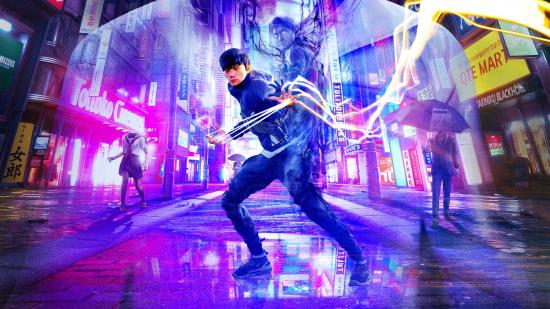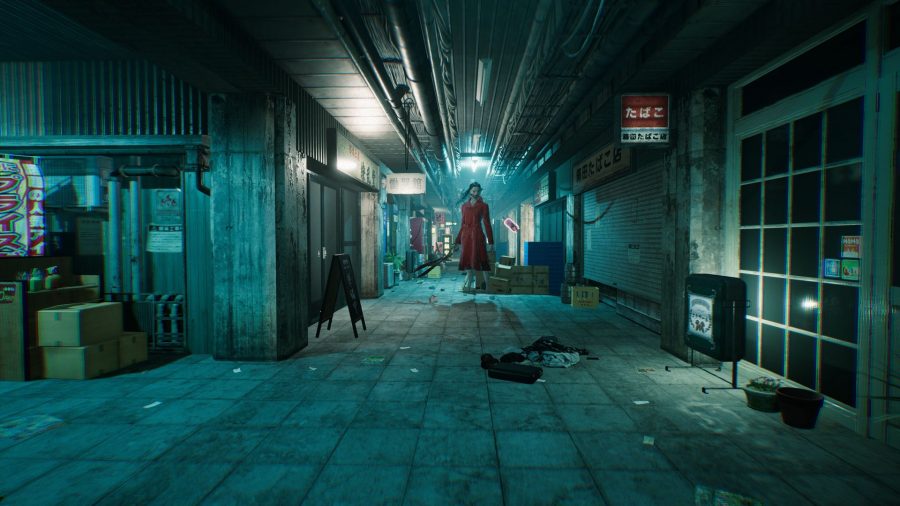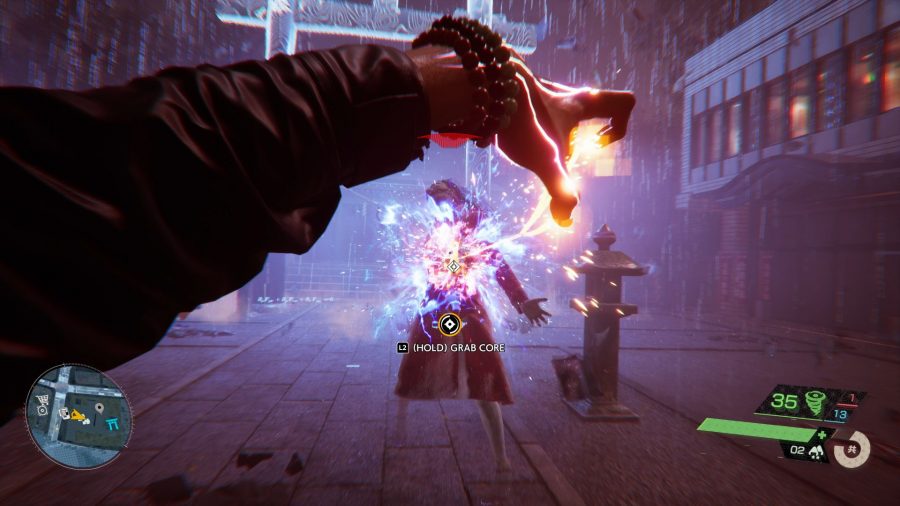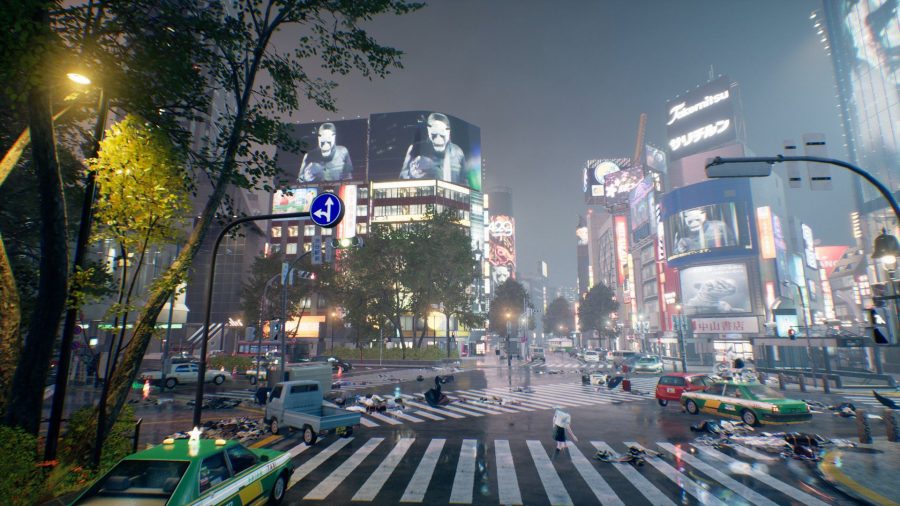Ghostwire: Tokyo made a heck of a first impression when it debuted back at E3 2019 with a mysterious trailer introduced by studio head (and Resident Evil legend) Shinji Mikami and creative director Ikumi Nakamura. Since then, Nakamura has left the studio, and after a few more similarly unrevealing trailers, we still haven’t seen much indication of what the game actually is. A recent behind-closed-doors gameplay presentation changed that, and now we have an hour of action from the early stages of the story to break down for you.
So what is Ghostwire: Tokyo? Basically, it’s a first-person action game where you shoot ghosts with spiritual energy. Combat looks something like a modern, action-oriented Resident Evil game: slow-paced, but without the constraints of true survival horror. It all takes place in an open-world version of Tokyo filled with activities to complete and quests to undertake. That stuff will all feel familiar, but the bit of Ghostwire that has me dying to see more is its unhinged sense of surrealism.
Ghostwire puts you in control of Akito, a seemingly ordinary guy who’s been fused with a spectral ghost hunter named KK. Akito has a very strait-laced, everyman reaction to all the horrors around him, while KK serves as his cynical mentor, whose world-weary advice is delivered with a dollop of dry irony (KK’s also got some things to say about economic morality, telling Akito at one point that “all property is theft, kid”). A strange fog is causing the people of Tokyo to disappear, and the pair are trying to track down the mysterious masked villain Hannya and put a stop to the spirit realm incursion.
To do that, Akito has to make use of ethereal weaving, which forms the basis of your powers. You can fire blasts of energy from your fingertips as a sort of peashooter that gradually drains some sort of spiritual ammo that’s tracked in the lower right of the screen. Defeated enemies drop green energy that can refill that power. You also start with a shield for blocking attacks or deflecting projectiles back at the monsters.
Those monsters are more properly known as Visitors, apparitions that seem to mostly take the form of faceless reflections of ordinary Tokyo citizens. Expressionless salarymen stagger towards you through narrow streets, moving at uneven speeds and changing directions while you’re trying to land an effective shot, which looks unnerving and appears to be a way to throw off your aim.
While it’s tough to tell with a hands-off demo, it looks similar to Resident Evil Village’s combat, just with less resource management and a whole lot of neon. The pace is significantly slower than in most modern FPS games, and Visitors lurch and lunge around like Village’s moroaice. You also move slowly, and there’s very little room to dodge attacks in the claustrophobic passages of Tokyo’s urban centre.
While the streets are narrow, this is still an open-world game in which you can freely explore a slice of Tokyo, taking on side quests or other activities highlighted on the map. Visitors spawn in small groups around the city, providing light bits of combat, which you can approach either by striking first or sneaking in for stealth takedowns. Corrupted torii gates serve as focal points across the world – something akin to a Far Cry-style radio tower. At one point, you cleanse a set of three gates in a small area, which clears a ghostly fog from your surroundings and unlocks access to new firepower in the form of, literally, a new fire power.
The ghosts aren’t all bad. Besides the monstrous Visitors, you’ll also find more friendly yokai, which you can talk to or gain new powers from. One yokai takes the form of a cat running a convenience store, where you can buy items that restore health or help you capture souls that’ve been turned to ghosts before their time. Once you’ve captured those souls, you can take them to a phone booth – Akito asks “do they even have those anymore?” – and restore their mortality.
In a side mission, a ghostly old woman asks you to rescue her house’s zashiki-warashi, another type of yokai meant to bring good fortune to a household. The old woman is convinced that the yokai has been kidnapped by her greedy landlord, and indeed, the spectre of that landlord’s avarice has to be sealed away, which you do by drawing a sign on-screen in the style of Okami’s paintbrush mechanics. Between the lingering greed of landlords and KK’s comments on property and theft, it’s looking like Ghostwire isn’t afraid to dive into the anxieties of our zeitgeist.
A more linear story mission sees Akito and KK exploring an apartment building. This starts out normal enough, but eventually the pair stumbles across some ghostly goop and things very quickly get a bit… weird. A hallway twists sideways and furniture drifts up or down without respect to the laws of physics. Eventually, the geometry takes an Escheresque turn: all the doors go to the wrong places, floors become ceilings, and hallways become tiny crawl spaces.
That sense of surrealness is the bit of Ghostwire that makes the strongest impression. Even when physical space isn’t rewriting itself in front of your eyes, the use of colours, unnerving enemy movements, and general detachment from logic and reality makes for a delightfully refreshing tone, and I’m extremely excited to soak in the vibes for myself.
In a lot of ways, Ghostwire: Tokyo reminds me of a PlayStation 3 game. Not that it looks in any way old or dated – well, aside from the fade to black that marks the transitions between cutscenes – but in its design ethos. It’s a game that borrows from Western design tropes to expand the scope of a setting that feels uniquely Japanese. It looks like the kind of game that’s increasingly rare these days, and I can’t wait to see more of it.
 PC Game Pass PC Game Pass $9.99 $1.00 Buy now Network N earns commission from qualifying purchases via Microsoft and other programs.
PC Game Pass PC Game Pass $9.99 $1.00 Buy now Network N earns commission from qualifying purchases via Microsoft and other programs.



